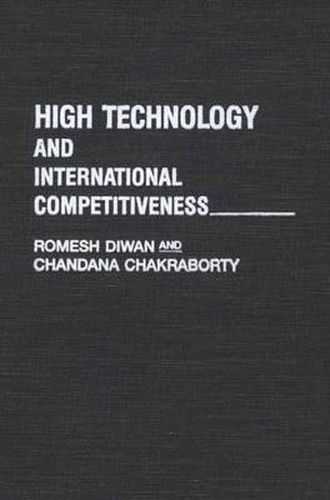Readings Newsletter
Become a Readings Member to make your shopping experience even easier.
Sign in or sign up for free!
You’re not far away from qualifying for FREE standard shipping within Australia
You’ve qualified for FREE standard shipping within Australia
The cart is loading…






Following World War II, the US manfacturing sector emerged as the dominant industrial force in the world in virtually all areas, including productivity, market share, innovations and capital investments. Though other countries have caught up with and surpassed the United States in many industries, Romesh Diwan and Chandana Chakraborty argue that America can recapture its dominant role by moving forcefully into high-technology industries. In this work, they examine competitiveness in a range of high-technology enterprises, analyzing the industries as an aggregate as well as through three specific examples: semi-conductors, telecommunications and computers. The authors provide a complete understanding of the technical changes and developments that are taking place in US high technology, and offer guidance to policy makers in promoting competitive strength. Their work defines and quantifies the high-tech industrial sector of the US economy, and analyzes the productivity of this sector by utilizing a translog cost function, which provides information about the structure of the input-output relations in a particular industry. Using these functions, Diwan and Chakraborty answer quantitatively a number of questions relating to the growth of various inputs, productivities and outputs, which lead to conclusions regarding the structure of production, costs, and capacity in US industry. Their conclusions - that technical change is biased in the main in favour of capital and material and that capital and skilled labour are complements - are consistent with new ideas and theories in the field. This work should prove a valuable reference source for professional economists and policy experts, as well as for scholars and students in international trade, finance and development.
$9.00 standard shipping within Australia
FREE standard shipping within Australia for orders over $100.00
Express & International shipping calculated at checkout
Following World War II, the US manfacturing sector emerged as the dominant industrial force in the world in virtually all areas, including productivity, market share, innovations and capital investments. Though other countries have caught up with and surpassed the United States in many industries, Romesh Diwan and Chandana Chakraborty argue that America can recapture its dominant role by moving forcefully into high-technology industries. In this work, they examine competitiveness in a range of high-technology enterprises, analyzing the industries as an aggregate as well as through three specific examples: semi-conductors, telecommunications and computers. The authors provide a complete understanding of the technical changes and developments that are taking place in US high technology, and offer guidance to policy makers in promoting competitive strength. Their work defines and quantifies the high-tech industrial sector of the US economy, and analyzes the productivity of this sector by utilizing a translog cost function, which provides information about the structure of the input-output relations in a particular industry. Using these functions, Diwan and Chakraborty answer quantitatively a number of questions relating to the growth of various inputs, productivities and outputs, which lead to conclusions regarding the structure of production, costs, and capacity in US industry. Their conclusions - that technical change is biased in the main in favour of capital and material and that capital and skilled labour are complements - are consistent with new ideas and theories in the field. This work should prove a valuable reference source for professional economists and policy experts, as well as for scholars and students in international trade, finance and development.